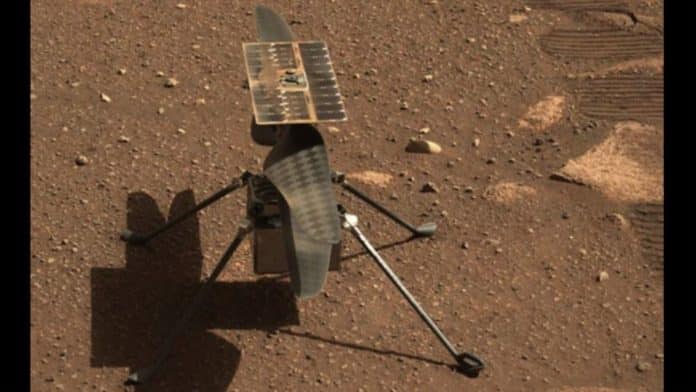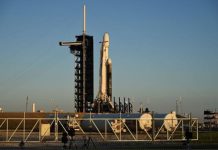
ORLANDO, Fla., April 8 (UPI) — NASA’s Mars helicopter Ingenuity, the first powered aircraft on another planet, is free of the Perseverance rover that carried it and appears to be functioning well ahead of its first flight on Sunday, the space agency said.
NASA plans to broadcast the results of that first flight at 3:30 a.m. EDT Monday after the helicopter transmits data and images to Perseverance, which will send them back to Earth.
The helicopter detached from the rover’s underbelly Saturday and survived subzero temperatures with its own heaters, which NASA said Tuesday was “a major milestone.”
The 4-pound rover uses solar panels to charge its batteries and keep delicate electronics safe from extreme cold that can reach 130 degrees F below zero.
“So far, everything has gone very well, so I’m 90% stress-free about Ingenuity now,” said Jeremy Morrey, a principal engineer at Lockheed Martin, which built the helicopter’s protective shield and robotic release mechanism.
Morrey said he and many others on NASA’s team watched fervidly as high-resolution images show the aircraft unfolding as designed.
“The images were kind of spectacular really,” Morrey said. “I mean, you can see the texture and the carbon fiber makeup of the rotors and the little springs as they were released.”
Ingenuity was covered in red Martian dust, even though it had been under a cover during the rover’s landing on Feb. 18 because thrusters on the rover’s landing jet pack had kicked up clouds of debris.
“The cover was designed to protect Ingenuity from rocks and pebbles, not from dust, so there was a gap where dust got in,” Morrey said. “Once the helicopter rotors start turning, I expect it will blow away all that dust. They may also stir up a lot more of it though. We’ll see.”
Lockheed is working on landing apparatus for NASA’s next interplanetary helicopter, the Dragonfly mission to Saturn’s moon, Titan, in 2027. Morrey said NASA and Lockheed are watching Ingenuity closely for lessons that can be applied to future missions.
The helicopter also has a camera, and sent its first photo back to NASA, showing dusty red pebbles below it. The aircraft is carrying no science equipment as NASA considers it purely a demonstration of powered flight on another planet.
The helicopter’s survival since its release Saturday confirms that it has “the right insulation, the right heaters and enough energy in its battery to survive the cold night, which is a big win,” said MiMi Aung, the helicopter’s project manager with NASA’s Jet Propulsion Laboratory in Pasadena, Calif.
NASA plans a live broadcast at 11 a.m. EDT Monday to reveal more data and images, which is to include video taken by the rover showing the helicopter flying.





